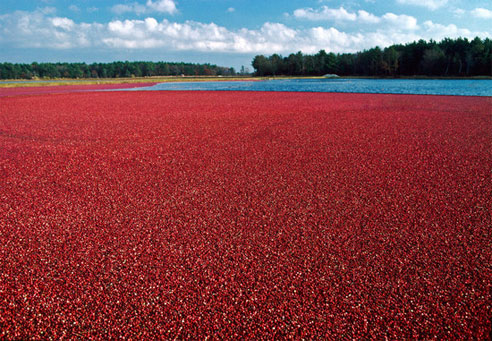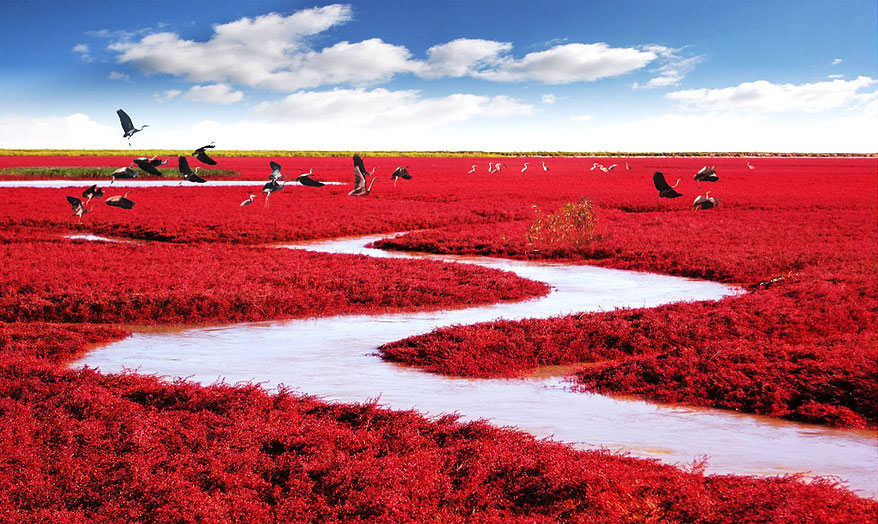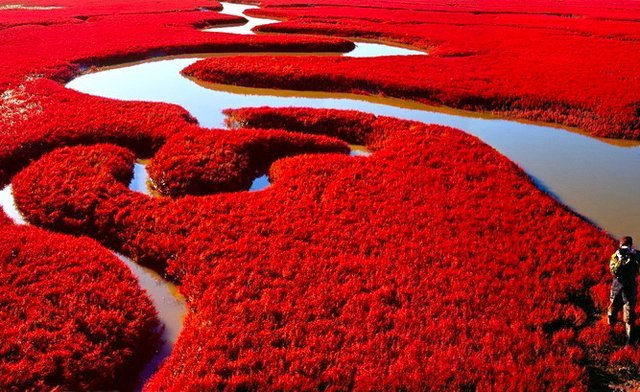By Izzi
Cranberry Bogs, Massachusetts
Cranberries – everyone’s favourite little berries, packed
with nutrients and antioxidants. But have you ever wondered how cranberries
grow and thrive? A distinctive wetland, called a bog, is an ecosystem with thick
sphagnum moss, acidic waters, peat deposits and a spongy, mat-like substance on
the water’s surface. This environment provides fresh water, and counters
unfavourable conditions these delicate and delicious cranberries need to grow
and survive. The cranberry bogs in Massachusetts is amongst one of the famous
geographic locations show casting a vibrant red glow over the water’s surface. Source: http://science.howstuffworks.com/life/botany/cranberry-bogs.htm
 |
| http://movies-wayneaddisoncyrus.blogspot.com.au/2011/03/cranberry-bog-images.html |
 |
| http://www.massvacation.com/blog/wp-content/uploads/2013/10/670x400-8531075171_a220da5f37_c.jpg |
Red Sea Beach, Liaoning Province, China
The biggest wetland and reed marsh in the world, appropriately
named the Red Sea Beach, is located in Liaoning, China. It is composed of
shallow seas and tide lands of a lively red radiance. The Red Sea Beach is home
to more than 260 kinds of birds and 399 kinds of wild animals. The bright
colour of the red grass genus Sueda brings an unusual yet impressive landscape
of 26 kilometres long every autumn, attracting many tourists. Source: https://en.wikipedia.org/wiki/Red_Seabeach
 |
| http://www.placestoseeinyourlifetime.com/incredible-red-seabeach-in-china-1968/ |
 |
| http://www.placestoseeinyourlifetime.com/incredible-red-seabeach-in-china-1968/ |
Hitachi Seaside Park, Ibaraki Prefecture, Japan
Hitachi Seaside Park is an extraordinary flower park located
in Hitachinaka, Ibaraki prefecture, Japan which blooms with various flowers all
year round. Source: http://smarter666.blogspot.com.au/2013/10/hitachi-seaside-park-located-in.html
 |
| http://planetden.com/nature/hitachi-seaside-parkjapan |
 |
| http://smarter666.blogspot.com.au/2013/10/hitachi-seaside-park-located-in.html |
Lake Retba, Senegal
Ever wonder what dunaliella salina bacteria would do to the
colour of a lake? No need to do any experiments, just have a look at Lake Retba
in Senegal. It’s PINK! The bacteria (completely harmless to humans by the way,
and totally swimmable in!) produces a red pigment in order to absorb the
sunlight, and thus gives the lake a distinct bubble gum pink colour. Now I know
that this is barely red, but this geographical location was just too cool to
not include in today’s post. Source: http://www.lakeretba.com/
 |
| http://amazingstuff.co.uk/nature/pink-lake-retba-senegal/#.Vfawp_mqpBc |
Lake Retba is not the only pink lake in the world. Another
pink lake, is Australia’s very own Lake Hillier in Western Australia.
 |
| http://whenonearth.net/swim-in-lake-hillier-pink-lake-australia/ |
No comments:
Post a Comment